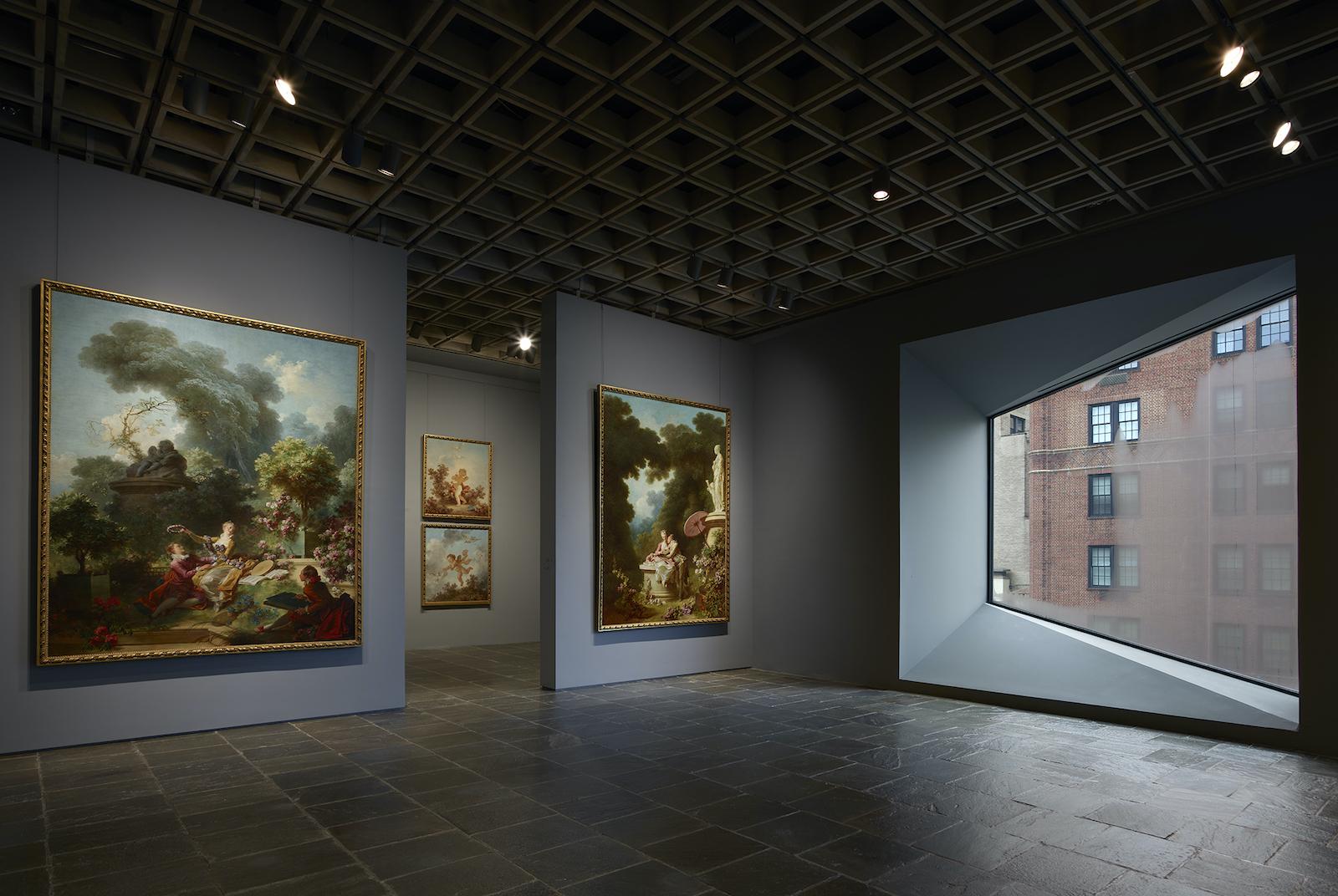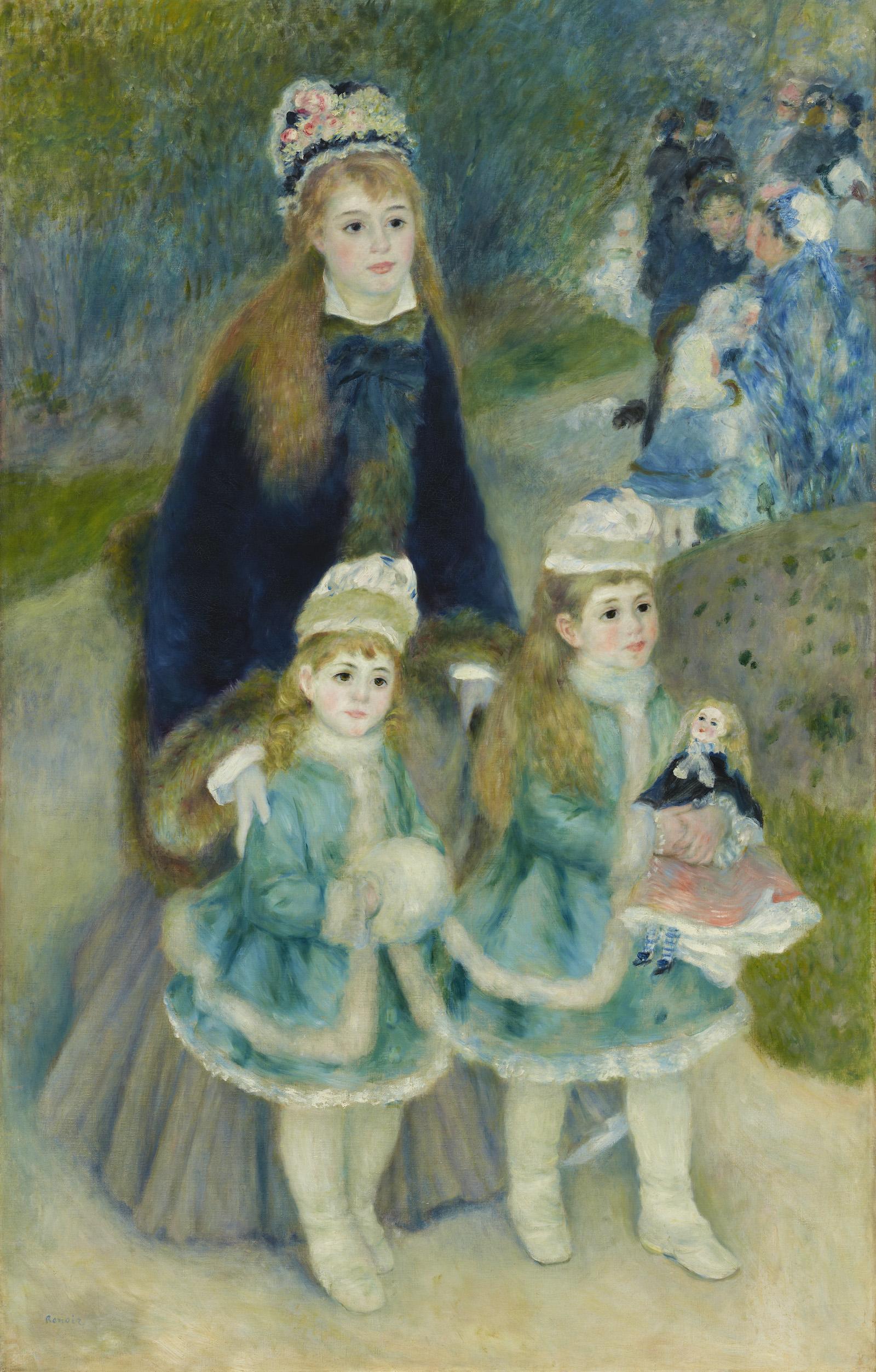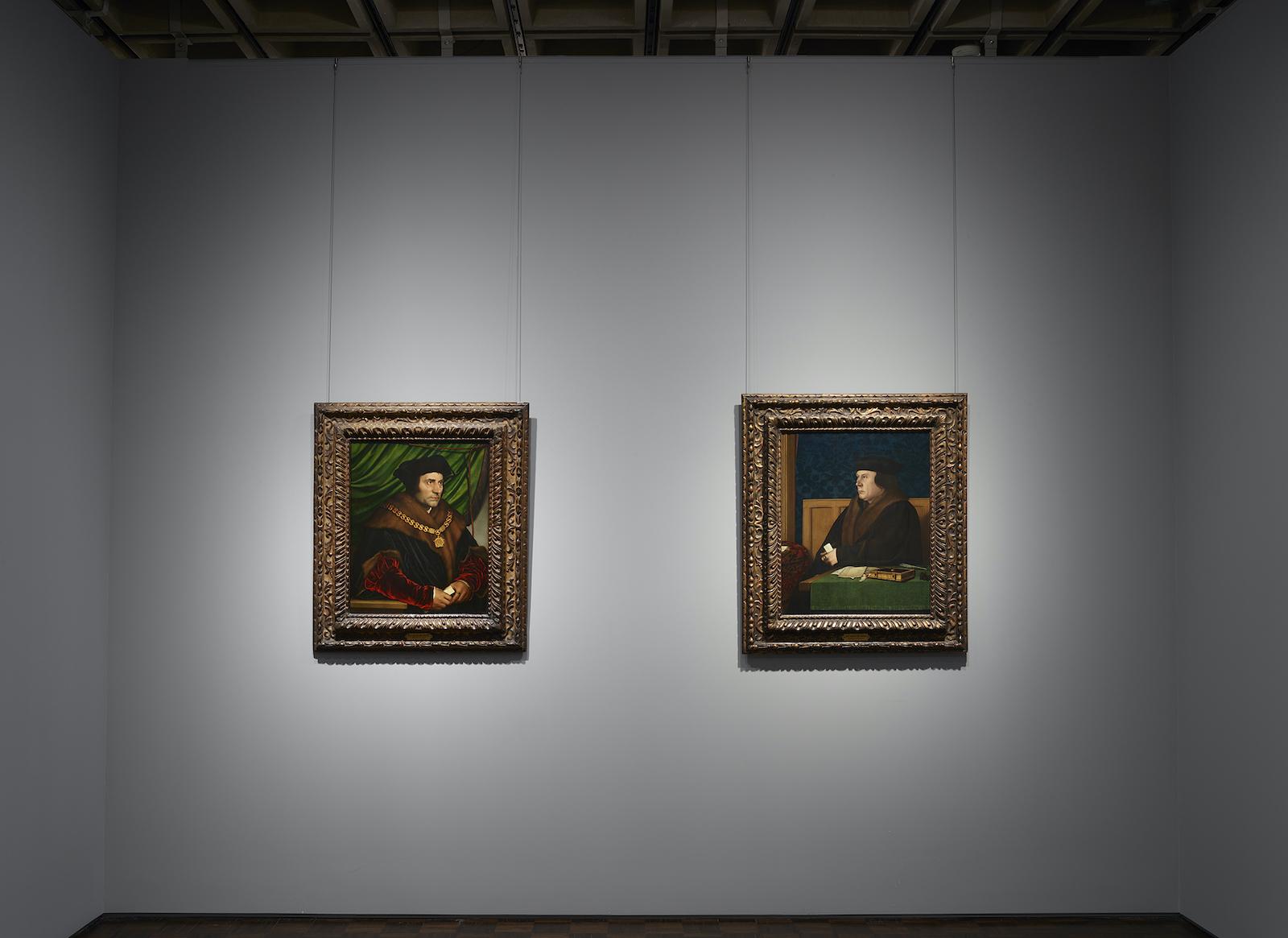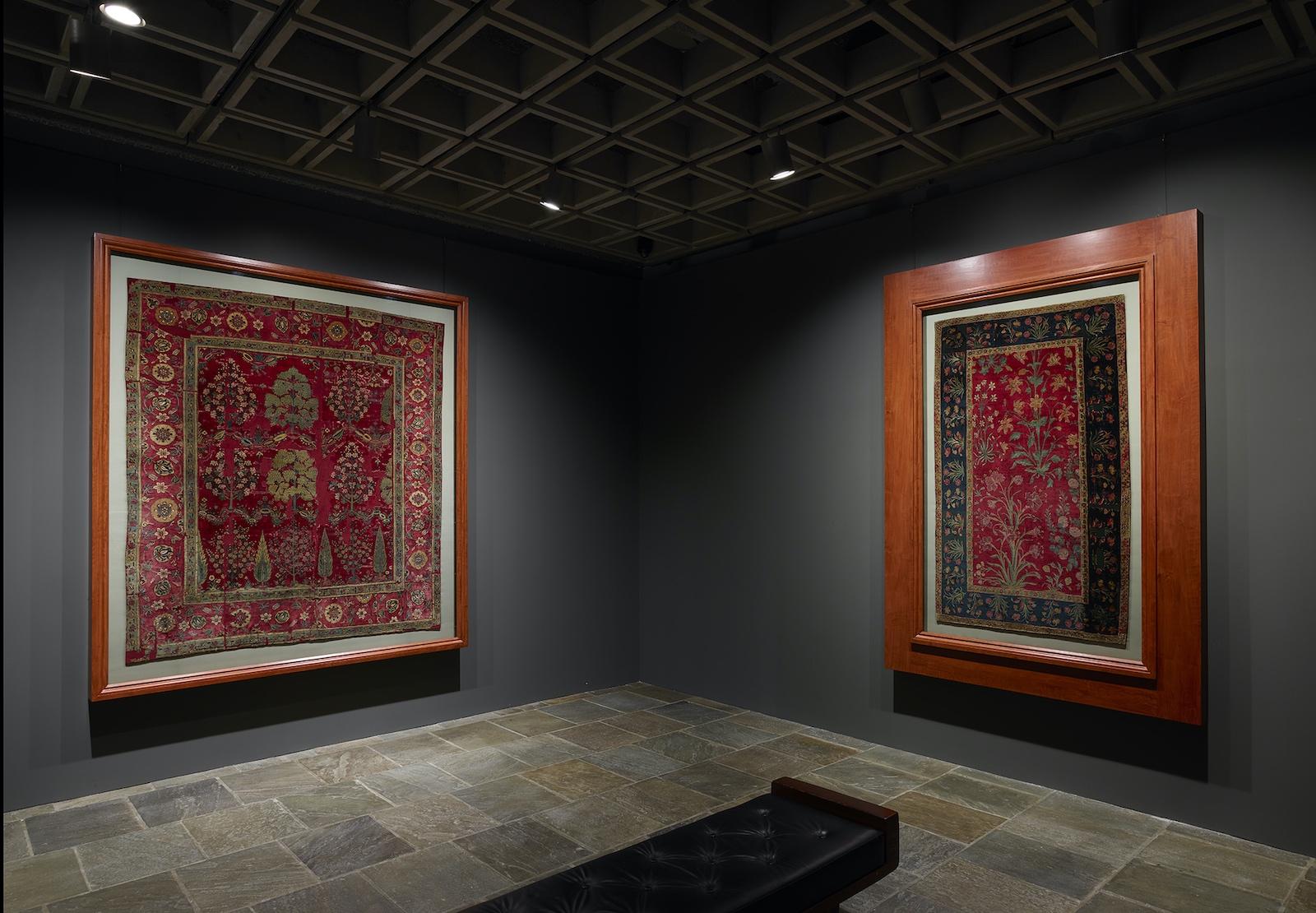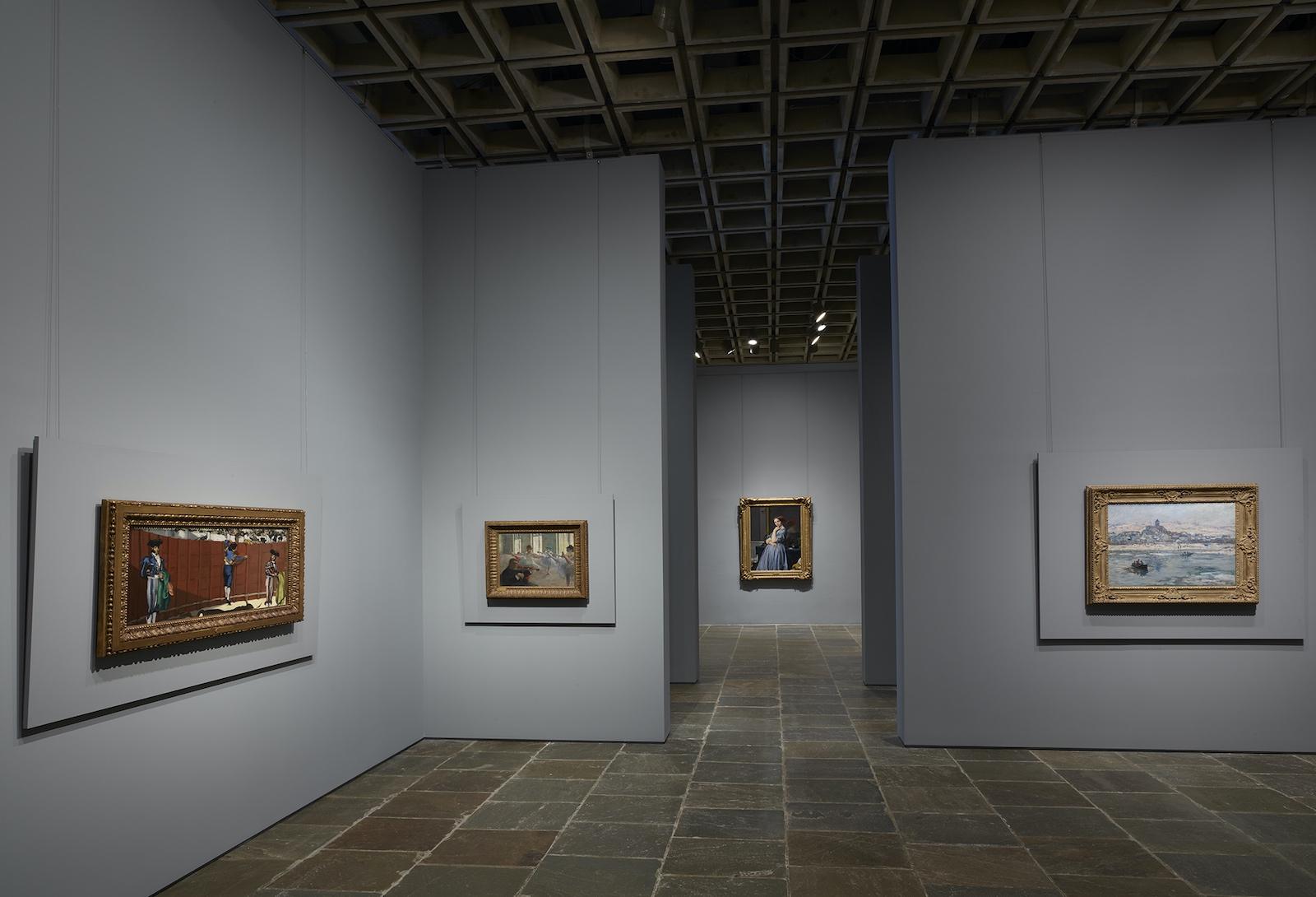While the institution is home to one of the most significant collections of sculpture and decorative arts in the United States, for many, the Frick experience has always been most shaped by the paintings in its lavish domestic interiors. Within the context of the mansion, the Frick’s impressive sculpture can sometimes be perceived merely as decorative when viewed head-on in front of a painting, while its decorative arts collection can go unnoticed. At Frick Madison, sculpture and decorative arts are presented independently, as works of art in their own right.
To highlight the importance of these works, the first object the visitor encounters on each floor of Frick Madison is a sculpture. On the second floor, which is dedicated to Northern European art, the Barbet Angel is given center stage in a room of its own. Often overlooked amidst the lush plantings of the Garden Court, the Angel is one of the Frick’s most prized works and possibly the only monumental fifteenth-century French bronze sculpture in existence, as most large French metalwork from that period was melted down during the French Revolution and the Napoleonic Wars. Cast by a cannon maker, the Barbet Angel stands atop a column, which invites visitors to move around it, to enjoy and appreciate the sculpture from all sides. Installed at Frick Madison, the Angel provides a bold new introduction to the collection, as well as a pronouncement on (and benchmark for) the importance of the institution’s sculptures.
A third-floor gallery is dedicated entirely to works in bronze. Straying from the sparseness of the Frick Madison display, this space evokes a fifteenth- or sixteenth-century studio and features a selection of the finest bronzes acquired by Henry Clay Frick from J. P. Morgan’s estate in 1916. At 1 East 70th Street, bronze statuettes have often been displayed to ornament the furniture; at Frick Madison, they are arranged in dialogue with each other, enabling visitors to study them closely. Also on prominent view for the first time is Francesco da Sangallo’s St. John Baptizing, the artist’s only signed bronze and the only such statuette at the Frick that was made to decorate a church. Designed to crown a marble font in Santa Maria delle Carceri in Prato (near Florence), the statuette is shown at Frick Madison in a manner not attempted in the residential backdrop of the mansion: atop a replica of the font on which it stood until the 1890s. The creation of this base by Factum Arte, made possible by a generous gift of Fabrizio Moretti, enables visitors at Frick Madison to imagine the object’s original context.
The third floor also includes a series of galleries devoted to decorative artworks, offered in dramatic displays outside of the domestic setting in which they are usually seen. Concentrated groupings of clocks and Limoges enamels offer fresh focus to two lesser-known but significant strengths of the Frick’s holdings. Another space features prized seventeenth-century Indian carpets, not shown on the floor as “furnishings,” but hung on the wall in the manner of paintings nearby (see below). Particularly arresting is a gallery displaying floor-to-ceiling porcelain organized by color, rather than by function, origin, or the date of manufacture. This blended presentation underscores how strongly influenced European firms such as Meissen and Du Paquier were by earlier and contemporary Asian wares. The confluence of East and West is further amplified by Baroque furniture. Examples by Boulle and the van Riesenburghs feature ebony, tortoiseshell, and repurposed Japanese lacquerware, materials available through emerging global trade networks. Also on the fourth floor, visitors will encounter several fine examples of important
French eighteenth-century furniture and ceramics, including the stunning fall-front desk and commode made for Marie Antoinette by royal cabinetmaker Riesener—often overlooked in the mansion by those seeking nearby Vermeers—and a remarkable marble and gilt-bronze table by Gouthière—often missed in the residence by those drawn to the Frick’s signature Ingres portrait traditionally installed above it. At Frick Madison, displayed hovering above, but not on this furniture, are several of the museum’s most important examples of early Sèvres porcelain, including the recently acquired Vase Japon and a pair of candelabra by Gouthière.




